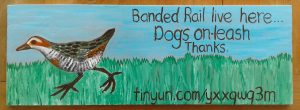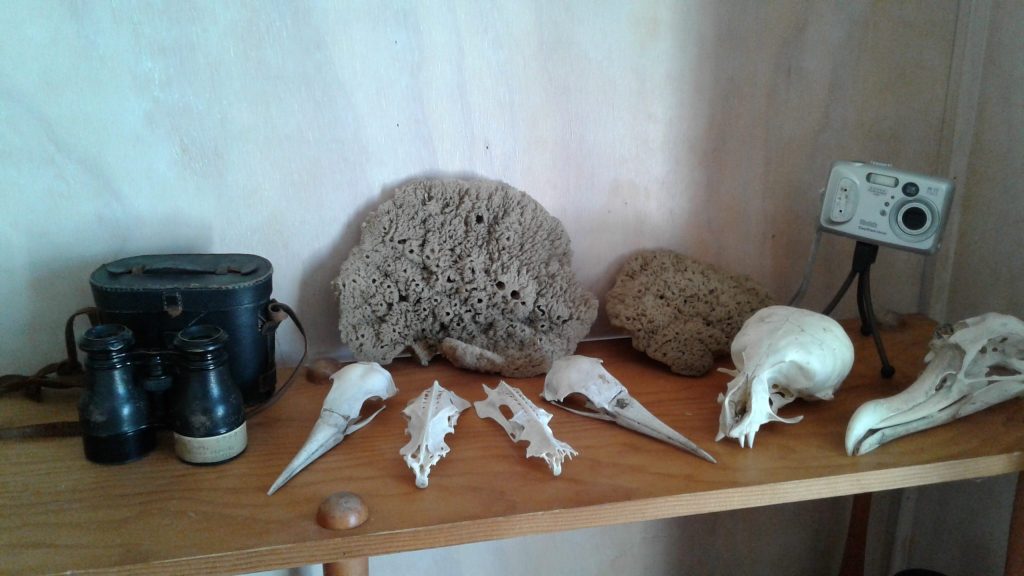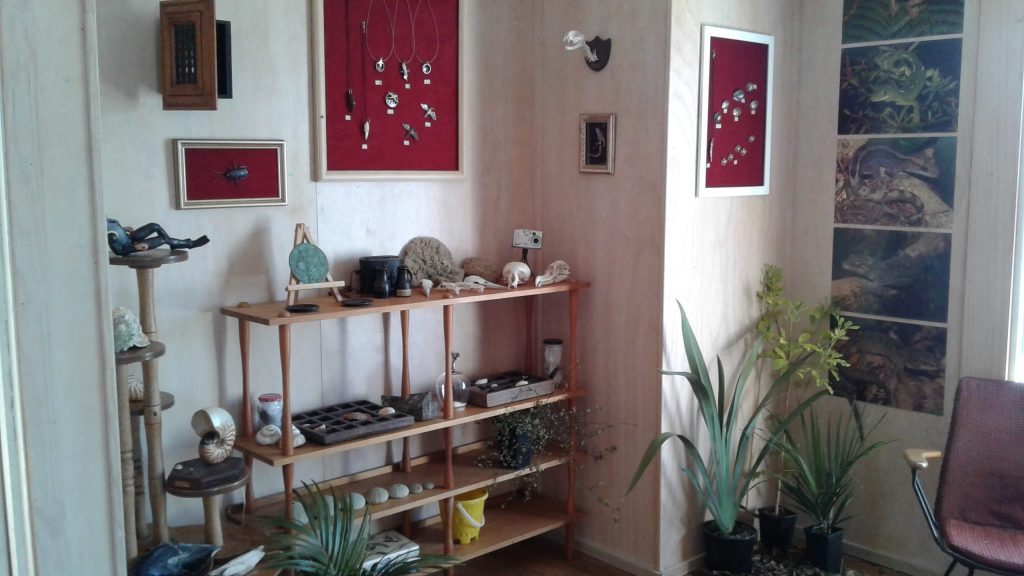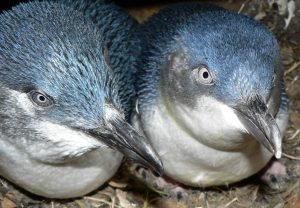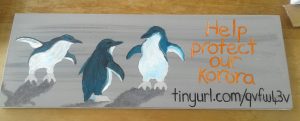Gallirallus philippensis
Moho pereru
The banded rail is a handsome little bird, with bands of orange and white worn like a mask across it’s red eyes, an underbelly of striped black and white feathers, a flourish of orange at the chest, and a stippled cloak of olive brown, black and white. Chicks are black and fluffy, and seen in Summer and Spring.
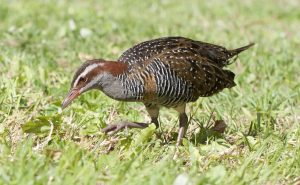
Photo credit, Toby Hudson
Banded rail live in wetland, in rough pasture, and on Rakino have also been spotted down at Maori Garden Bay, foraging around the spring that runs down to the bay. They are typically quite cryptic, and seldom forage more than a few meters from the edge of vegetation. You are most likely to see them at dawn and dusk, as they prefer to spend most of their time undercover, hunting for food. They are competent fliers, but prefer their feet on the ground, and can often be seen scuttling for cover, if you are looking..
They eat a variety of insect species, worms, snails, spiders, crabs, but will also tuck into seeds, fruit, and dead fish if they are available.
Threats to the little rail are numerous, and sadly they are declining in number. Their habitat is at risk as people remove wetland and mangroves in favour of pasture and marinas, and they are also at risk from the usual introduced predators; rodents, mustelids, and feral cats. Happily this isn’t a problem on Rakino, as people restore wetland and replant habitats, and we are also extremely fortunate to be free of the aforementioned predators.
A few people on Rakino are lucky to have banded rail living on their properties, and want to prevent them from coming to harm. You can help protect banded rail by keeping dogs on-leash around areas where banded rail nest and forage, and also ensuring cats are under control.
